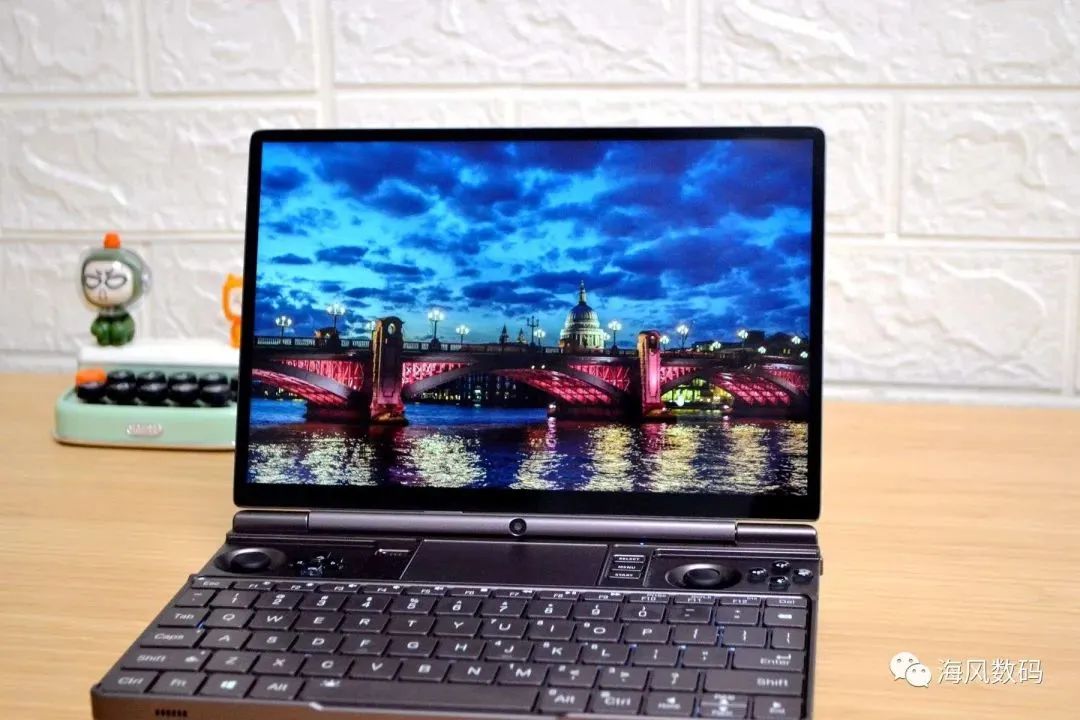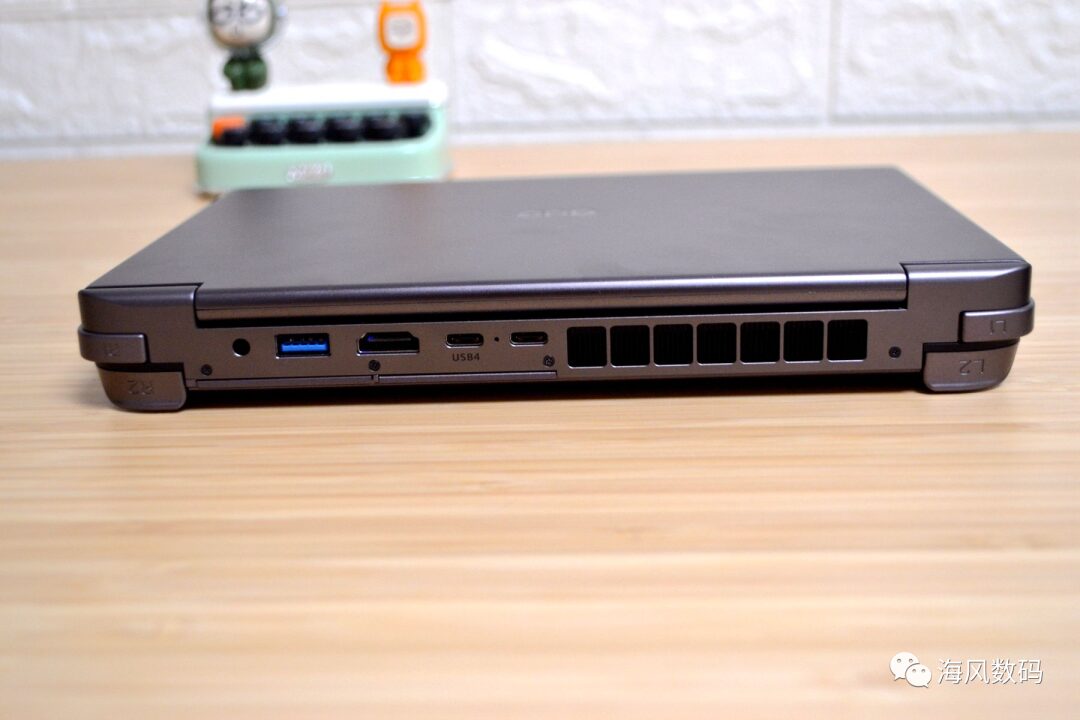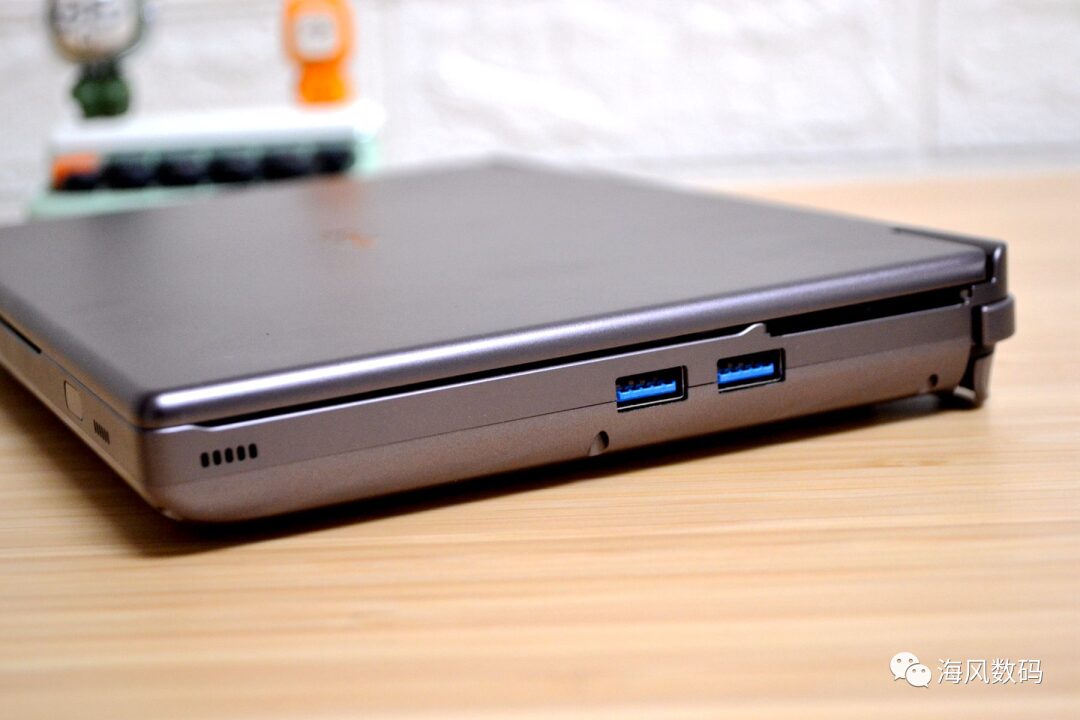Have you noticed that laptops are getting lighter and thinner, yet their performance rivals that of traditional gaming laptops? Many people are beginning to realize that the main reason for buying a laptop is its portability. If the performance issues are resolved, most would likely opt for lighter models instead of bulky gaming laptops. Consequently, lightweight laptops are becoming increasingly popular. At the same time, some micro handheld devices are gradually gaining recognition from the general public. Many brands are starting to explore the micro handheld device market. To be honest, I have been following these products for a while. In the past, handheld devices were simply miniaturized versions of laptops but had very poor performance due to size constraints and the limitations of processors at that time. Most of the early Win-series handhelds were powered by low-power, underperforming processors like the Intel Celeron.

Now, many years have passed without me paying much attention to handheld devices. Recently, I discovered that the performance of micro handhelds has completely transformed. I even found that AMD’s latest flagship processor, the Ryzen 7 6800U, is now being used in micro handhelds. This processor is typically reserved for flagship laptops, prompting a reevaluation of micro handheld products. With performance shortcomings addressed, micro handhelds can almost compete with mainstream flagship laptops, and their smaller size offers significant portability advantages. After a comprehensive examination of the current mainstream micro handhelds, I ultimately purchased the latest flagship micro handheld, the GPD WIN Max 2, which is equipped with the AMD Ryzen 7 6800U processor.

Many people may be encountering such products for the first time and might have numerous questions. For instance, since it is a handheld gaming laptop, how does its performance stack up? Given its smaller size compared to traditional laptops, there are concerns about its cooling capabilities. Effective cooling is crucial for performance; if it is inadequate, even a powerful CPU cannot unleash its full potential. Additionally, as a gaming handheld, how does the feel of the game controller compare to that of professional handhelds like the Switch? Although the WIN Max 2 sports a screen size of 10.1 inches, which is small for a laptop, it is still larger than the roughly 7-inch traditional handhelds. Is this size practical for gaming? With these questions in mind, let’s take a hands-on look at the device and see if it’s worth trying out.

In fact, I did quite a bit of research before purchasing this type of micro gaming handheld. Currently, there are many designs available on the market, such as the horizontal layout similar to Sony’s PSP or the vertical style of Nintendo’s handhelds. However, the GPD WIN Max 2 has a unique design; it resembles a smaller version of a laptop. Unlike traditional laptops, it features a touchpad at the top and gaming controllers designed on either side of the touchpad. Therefore, aside from being a gaming handheld, I believe it is also suitable for everyday office work, potentially replacing traditional laptops. This dual functionality showcases GPD’s smart design in this handheld. Now, without further ado, let’s take a look at its exterior design.


The A and C surfaces of the GPD WIN Max 2 are made from 6061 aluminum-magnesium alloy. The body is crafted using the same Unibody technology as Apple, designed through 36 processes, and comes in a dark iron color. The overall texture of the device is impressive, while the back is made from aviation-grade impact-resistant ABS synthetic resin. The body measures 227 × 160 × 23 mm and weighs only 1 kg, making it quite comfortable to hold. Compared to conventional laptops that typically weigh around 3 kg, this weight and size are unmatched by any other laptop on the market.

The GPD WIN Max 2 features a screen similar to that of a laptop; upon opening the lid, the screen is visible. GPD has equipped it with a 10.1-inch “super large” eye-protective full-screen display from Japan’s JDI. The bezels are incredibly narrow, achieving a screen-to-body ratio of 90%. Thus, even though the screen is large, the body remains compact.
The screen has a 16:10 golden ratio, utilizes IPS technology, and is made from fifth-generation Corning Gorilla Glass. It operates in native landscape mode with a default resolution of 1920×1200, supporting a maximum resolution of 2560×1600. The pixel density reaches 299 PPI, significantly exceeding Apple’s Retina display standards, resulting in exceptionally fine display quality.

The screen brightness reaches up to 400 nit and supports an 80.2% DCI-P3 wide color gamut. For a Windows handheld, the display quality is exceptionally impressive, and it also supports 10-point multi-touch and 4096 levels of pressure sensitivity (MPP 2.0 protocol), compatible with Surface Pen styluses. Notably, this screen employs Metal Mesh technology, ensuring high light transmission while preventing issues like ghosting or drift during drawing, making it suitable for professional illustration scenarios.





The device features a wealth of ports, offering even more expandability than many laptops. Starting with the ports GPD has equipped this handheld with, it’s impressive how well they utilized the limited space of such a small computer, which is comparable in size to an iPad. On the top side of the device, from left to right, there is a Type-C 3.2 Gen2 port that supports PD 100W fast charging, followed by a USB4 port equivalent to Thunderbolt 3, allowing AMD laptops to support external GPU docks, eliminating the need to envy Intel machines. This port also supports PD 100W fast charging, so you can plug it into any port while charging. Next is an HDMI 2.1 port, a USB-A Gen1 port, and a 3.5mm audio jack.


With the included 100W fast charger, you can charge through any Type-C port.

The left side of the device features a TF card slot and an SD card slot, with a small hole for BIOS reset. The right side has two USB-A Gen1 ports, and with one USB port on the back, there are a total of three USB-A ports, sufficient for connecting a keyboard, mouse, or external hard drive. Additionally, the TF and SD card slots allow easy insertion of SD and TF cards, which is particularly convenient for photography enthusiasts who need to transfer photos from their DSLRs without carrying an extra card reader. The SD card slot supports the SD 4.0 bus protocol, with read and write speeds of up to 312MB/s and can be expanded up to 2TB. The TF card slot supports speed classes A2, U3, V30, with read and write speeds of 160MB/s. Many laptops have eliminated this practical interface, making the WIN Max 2’s port offerings superior to most ultrabooks.


I happen to have a 128GB SD card that supports a maximum read speed of 250MB/s and a regular 128GB TF card. The TF card is used to expand the WIN Max 2, while the SD card is primarily used for copying images and videos. I tested the speed of inserting this SD card into the WIN Max’s SD card slot using CrystalDiskMark to see if it could reach the maximum speed of the card. The read speed reached 280MB/s, and the write speed was 105MB/s, which is impressive, confirming the SD 4.0 bus protocol’s speed.



On the front side of the device, there is a power button with fingerprint unlocking, which is a clever design. Typically, laptops place the power button on the C surface, but have you noticed that when connecting an external display, closing the lid locks the screen? When you want to use the computer again, you have to open the lid and enter the password to unlock it, which is quite cumbersome. The WIN Max 2 cleverly places the power button on the front side, avoiding these issues. Additionally, GPD has integrated fingerprint unlocking into this power button, making it both secure and convenient to use.


I found that the WIN Max 2 has two speakers on the front, with two more on the left and right sides. This configuration creates a four-channel surround sound system, which is quite rare even in standard laptops. This design enhances the GPD WIN Max 2’s audio experience, providing an immersive surround sound experience when watching movies or playing large AAA games, effectively reproducing the 3D audio effects of games and films.



The WIN Max 2 is also equipped with a 2MP front camera located in the middle of the hinge, supporting ultra-wide angles. This feature is beneficial for office use, particularly for video conferencing. However, the pixel quality of laptops’ cameras is generally low, so for selfies, you might still prefer using your phone.


The controller section employs Hall effect joysticks, linear trigger shoulder buttons, dual vibration motors, and a six-axis gyroscope, maximizing the use of the sides and C surface of the device. Notably, the WIN Max 2 introduces Hall effect joysticks, which are more durable and provide a better tactile experience compared to standard potentiometer joysticks. The joystick’s omnidirectional design allows for 360° movement signal output with ultra-linearity and no dead zones. The top sides of the device feature linear analog trigger buttons, supporting 256 levels of feedback, enhancing the experience in shooting and racing games.





Additionally, on the back of the device, the GPD WIN Max 2 features two mappable back buttons that can be freely mapped to game shortcuts using the included WinControls tool. This is incredibly practical, allowing for smoother game control without needing to rely on the keyboard.


Moreover, we discovered an inconspicuous gap on the back side of the device that can be used to pull out two magnetic metal caps. According to the instructions, these magnetic caps can cover the joysticks and buttons on the front, allowing the handheld to instantly transform into a small laptop, creating a seamless appearance. While the caps don’t have special functions, they are practical for office use. When presenting a PowerPoint to a client, it may not be appropriate for them to see gaming controllers, so covering them with the caps instantly turns it into a business laptop. GPD’s attention to detail in product design is commendable.



Speaking of transforming into a business ultrabook, we cannot overlook the keyboard. The GPD WIN Max 2 is equipped with a standard layout keyboard. While the keys are slightly smaller than those on regular laptops, they provide a good typing experience and are easy to adapt to, with excellent key rebound feedback. I previously experienced similar micro handhelds that altered the keyboard layout due to size constraints, which made them inconvenient to use. The WIN Max 2 does not have this issue. The only difference is that the touchpad is placed above the keyboard, in the middle of the game controller area. Notably, the WIN Max 2 includes precise touch control drivers, allowing for customizable touch gestures through Windows’ built-in Touchpad configuration tool, enhancing the touch experience.


The keyboard also features white backlighting with two brightness levels.


Next, let’s examine the performance of this handheld gaming laptop equipped with the Ryzen R7 6800U processor. In fact, the 6800U has already earned the nickname “God U” among enthusiasts due to AMD’s significant improvements in integrated graphics performance. The integrated graphics performance rivals that of a desktop-level discrete graphics card like the 1050Ti, while the CPU performance is comparable to Intel’s 12th Gen i5. Even within laptops, this represents a flagship-level performance, and it is particularly impressive for a handheld device, so I am eager to see how it performs.

Before the official evaluation, let’s take a look at the cooling system of the GPD WIN Max. We must ensure that cooling does not hinder the processor’s performance. The WIN Max 2 adopts a PC-grade large turbine fan and dual heat pipe design, utilizing a high-speed intelligent cooling system with a large displacement side-blowing mechanism to ensure optimal cooling performance. When the handheld is powered on, it intelligently adjusts the fan speed based on the current state. During normal use, if the internal temperature is below 40°C, the fan operates at only 20% speed. When running large AAA games, if the internal temperature exceeds 40°C, the fan speed increases by 2% PWM increments, maxing out at 100%. Later, we will test the cooling performance during prolonged gameplay of large AAA games.

The WIN Max 2 is powered by the AMD Ryzen 7 6800U processor, which employs the latest 6nm process technology, features a 16MB L3 cache, and has 8 cores with 16 threads, reaching a maximum boost frequency of 4.7GHz. The integrated graphics are based on the RDNA2 architecture, featuring AMD Radeon 680M with 12 compute units and 768 stream processors. Coupled with Infinity Cache technology, it achieves a 30% increase in boost frequency at the same power consumption level compared to the RDNA1 architecture, with performance per watt improving by up to 54%.
Additionally, my WIN Max 2 is equipped with 16GB of quad-channel LPDDR5-6400 MT/s memory, with a 32GB option available. The storage is a PCIe 4.0 M.2 SSD, with options for 1TB or 2TB. The device comes standard with a PCIe 3.0 SSD, which has been tested to achieve read speeds of 2035.2MB/s and write speeds of 1898MB/s. In the future, it can be upgraded to a PCIe 4.0 SSD, theoretically boosting speeds to 7.877GB/s.

In addition to the built-in M.2 2280 SSD, the back of the device also includes a reserved M.2 2230 slot, based on PCIe 4.0 × 4 bus technology, supporting throughput speeds of up to 7.877GB/s. However, due to layout constraints, the WIN Max 2 only supports single-sided SSDs, so it is crucial to choose the right SSD for expansion.


In the Lu Master benchmark, the WIN Max 2 scored nearly a million points, with a CPU score of 530,000, a graphics score exceeding 150,000, memory at 140,000, and storage at 140,000. Such scores surpass many laptops and even desktop PCs.

From the configuration chart, it is evident that the WIN Max 2 is equipped with quad-channel LPDDR5-6400 MT/s memory, which also enhances the memory bandwidth and data throughput due to the four-channel configuration.
The CPU-Z single-core performance score is 518, and the multi-core score is 4479.3.



The performance of the AMD Radeon 680M integrated graphics has seen significant improvements, nearly tripling the performance of the previous generation Radeon Vega 8. This allows the handheld to run the latest AAA games released in the past two years smoothly.
We tested several mainstream AAA games at a resolution of 1920×1200 and found that LOL averaged over 230 frames, while Genshin Impact maintained 60 frames.


Even when playing graphically demanding games like God of War 4, the WIN Max 2 supports AMD’s latest FSR 2.0 and RSR 2.0 technologies. These technologies can boost frame rates by 50%-100% without increasing power consumption. While playing God of War, I set the resolution to 1280*800 and enabled FSR, allowing for smooth gameplay with frame rates stabilizing above 45. In practice, the WIN Max 2 can maintain stable frame rates of 45-60 for mainstream large games.
This performance has truly reshaped my perception of handheld gaming devices. I never expected a Windows-based handheld could deliver such a seamless experience with the latest AAA games.

Meanwhile, while testing the GPD WIN Max 2 with Genshin Impact, I specifically monitored the device’s heat generation. As the game started, the cooling fan activated in response to rising temperatures. After an hour of playing Genshin Impact, the device’s body temperature reached 37.3°C, with the exhaust temperature at 40°C. This thermal performance was quite unexpected; GPD’s powerful PC-grade large turbine fan and dual heat pipe design provide excellent cooling. While the cooling fan does produce some noise at high speeds, it is not excessively loud and remains acceptable.



In conclusion, the GPD WIN Max 2, as a handheld gaming laptop, benefits from the powerful AMD Ryzen 7 6800U processor. The most significant upgrade is the new RDNA 2 architecture AMD Radeon 680M graphics card, which delivers nearly three times the performance of the previous Radeon Vega 8, and supports AMD FSR technology. This ensures smooth gameplay at 45-60 frames for the latest AAA games, completely overturning the stereotype that micro gaming handhelds lack performance, allowing Windows-based handhelds to achieve experiences comparable to desktop and professional gaming laptops. Additionally, the WIN Max 2 excels in hardware performance, featuring a 10.1-inch ultra-narrow bezel 2K full-screen display, four stereo speakers, and a wealth of port options, especially with the inclusion of the USB4 port, enhancing its versatility for external GPU dock support. As a handheld gaming laptop, it performs exceptionally well.
Furthermore, GPD’s innovative design allowing seamless switching between business and gaming modes is commendable. In daily use, it can also serve as a powerful office laptop, greatly enhancing its practicality.
If you are a gaming enthusiast and looking for a daily office laptop, there’s no need to buy a separate laptop and gaming handheld; the GPD WIN Max 2 alone can meet all your needs. What do you think of such a handheld gaming laptop? Will it potentially replace traditional ultrabooks in the future?